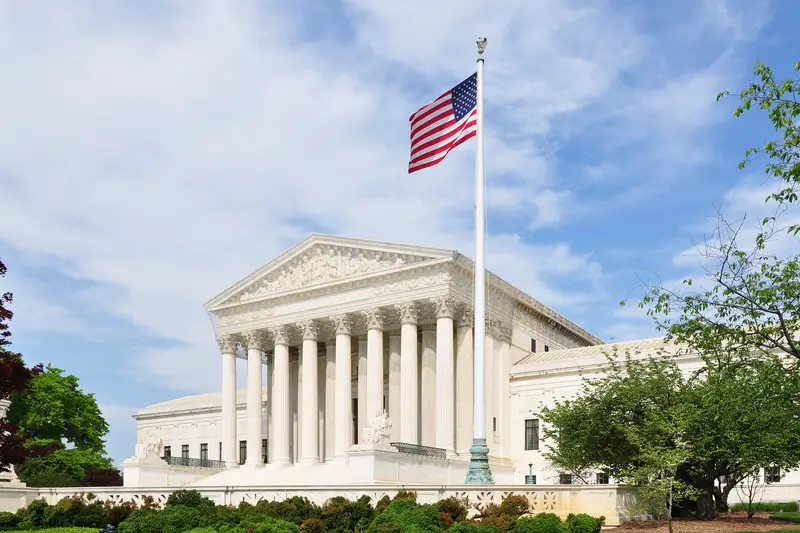The Supreme Court cleared the way Tuesday, July 8, for the Trump administration to resume mass firings of federal workers across nearly two dozen agencies, lifting a lower court injunction that had blocked the sweeping layoffs since May. The decision could result in thousands of job losses at major departments, including Agriculture, Commerce, Health and Human Services, State, Treasury, and Veterans Affairs.
In a brief unsigned order, the Supreme Court determined that the Trump administration was likely to succeed in its argument that the president’s executive order directing agencies to prepare large-scale reductions in force was lawful. The court noted it was not assessing the legality of any specific agency layoff plans, stating those plans were not before the court.
Justice Ketanji Brown Jackson was the sole dissenter among the nine justices, writing that the court demonstrated “enthusiasm for greenlighting this president’s legally dubious actions in an emergency posture.” She characterized the decision as wrong timing, given how little the court knew about what was happening on the ground.
Justice Sonia Sotomayor wrote separately that while the president cannot restructure federal agencies inconsistently with congressional mandates, she joined the majority because the district court remained free to consider specific agency plans in the future.
The ruling overturns a May 22 decision by US District Judge Susan Illston in San Francisco, who had sided with a coalition of labor unions, nonprofit organizations, and local governments challenging the administration’s plans. Illston previously argued that presidents may set policy priorities, but Congress creates federal agencies, funds them, and gives them statutory duties they must carry out.
The injunction had applied to 22 federal agencies and prevented the administration from conducting existing layoffs or planning future ones. Illston had also ordered the reinstatement of workers who had lost their jobs, though she delayed implementing this portion while appeals proceeded.
Attorney General Pam Bondi celebrated the Supreme Court’s decision, indicating on social media that it stopped lower courts from restricting Trump’s authority over federal personnel. She characterized it as another Supreme Court victory and noted that federal agencies could now become more efficient.
The State Department immediately moved to implement the court’s decision, announcing plans to fire approximately 1,300 employees by email in the coming days. Secretary of State Marco Rubio had previously told Congress the department planned to reduce its workforce by more than 15 percent, roughly 2,000 people total.
The layoffs target more than 1,000 civil servants and 246 foreign service officers with domestic assignments. Foreign service officers will be placed on administrative leave for 120 days before formal termination, while most civil servants face a 60-day separation period.
The State Department’s cuts will significantly impact bureaus focusing on human rights and democracy promotion abroad, including the Bureau of Democracy, Human Rights, and Labor, and the Bureau for Conflict and Stabilization Operations. Critics warned that weakening US human rights promotion and contracting humanitarian assistance offices represent a retreat rather than reform.
The administration’s broader restructuring effort stems from Trump’s February executive order directing agencies to prepare for government-wide downsizing. The effort was initially led by the Department of Government Efficiency, though Elon Musk has since departed from that role.
A senior White House official indicated Wednesday, July 9, that the administration would resume operations immediately, characterizing the reduction of federal government size as a priority. The official noted that agencies had their plans basically ready to go prior to the court injunction and would proceed agency by agency.
Federal employees across affected agencies expressed anxiety about the resumption of layoff plans. Nicole Cantello, president of a union local representing EPA employees in Chicago, described widespread apprehension among staffers who have no idea what will happen next.
EPA employees in the agency’s science office are particularly concerned after the agency announced plans to restructure its science staff. Energy Department employees also fear deep cuts, with an internal document earlier this year showing the department weighing significant program cuts and deeming approximately 56 percent of its staff as essential.
Interior Department employees are similarly nervous and uncertain, with some expecting reductions in force to begin imminently. The department had been preparing for layoff announcements prior to the court injunction.
The coalition of plaintiffs that brought the original case expressed disappointment with the Supreme Court’s decision, stating it dealt a serious blow to democracy and put services Americans rely on in grave jeopardy. They maintained that reorganizing government functions and conducting mass layoffs without congressional approval violates the Constitution.
The legal battle over Trump’s workforce reduction efforts continues despite the lifted injunction. Additional challenges to individual agency layoff plans are expected once those are released, with the dispute over the administration’s mass-layoff directive remaining active in lower courts.











